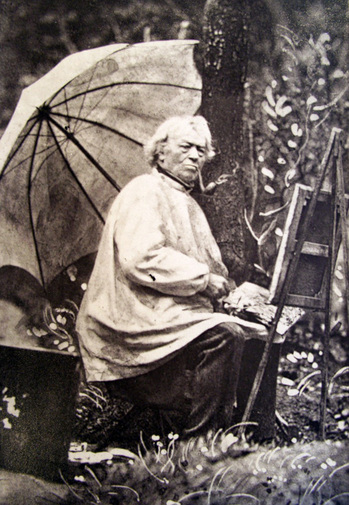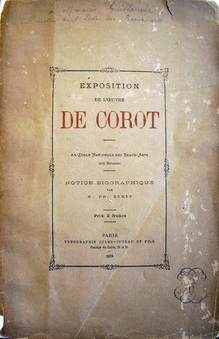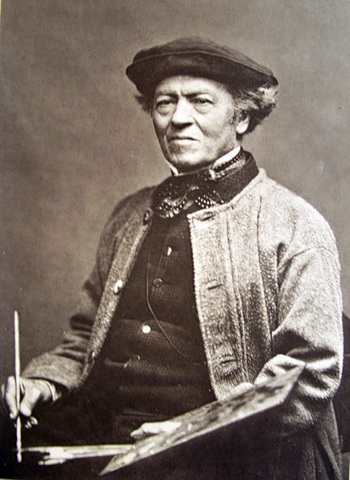Jean-Baptiste-Camille Corot (1796-1875), Exposition de l’oeuvre de Corot: a l’École nationale des beaux-arts. Notice biographique par M. Ph. Burty (Paris: Typographie Jules-Juteau et fils, 1875). Two woodburytypes from negatives by Charles Desavary. Graphic Arts Collection (GAX) in process.
Barbizon School painter Jean-Baptiste-Camille Corot (1796-1875) is remembered for many things, one of which being his innovations in plein-air landscapes (completed outside at the scene rather than inside a studio). He was also an early experimenter in photography.
In the 1850s, a circle of artists living and working in Arras were introduced to cliché-verre, the technique of sketching on a coated glass plate that is developed and printed as a photographic negative. These men included Corot and his friend, photographer Charles Desavary (1837-1885), who printing most of Corot’s glass negatives.
Late in his life, Corot posed for a series of portraits by Desavary, as though he was painting plein-air, sitting at a canvas under a white umbrella in his garden.
Corot died in February 1875 and an exhibition in his honor was mounted at the École nationale des beaux-arts in Paris, surveying the artist’s complete works. The surprisingly slim exhibition catalogue was published in two editions; the first was a large paper edition with two of Desavary’s portraits printed by Rose-Joseph Lemarcier (1803-1887) whose firm specialized in making woodburytypes. The second edition, slightly smaller in size, used various left-over prints indiscriminately pasted onto the frontispiece of each volume, as the supply allowed.


